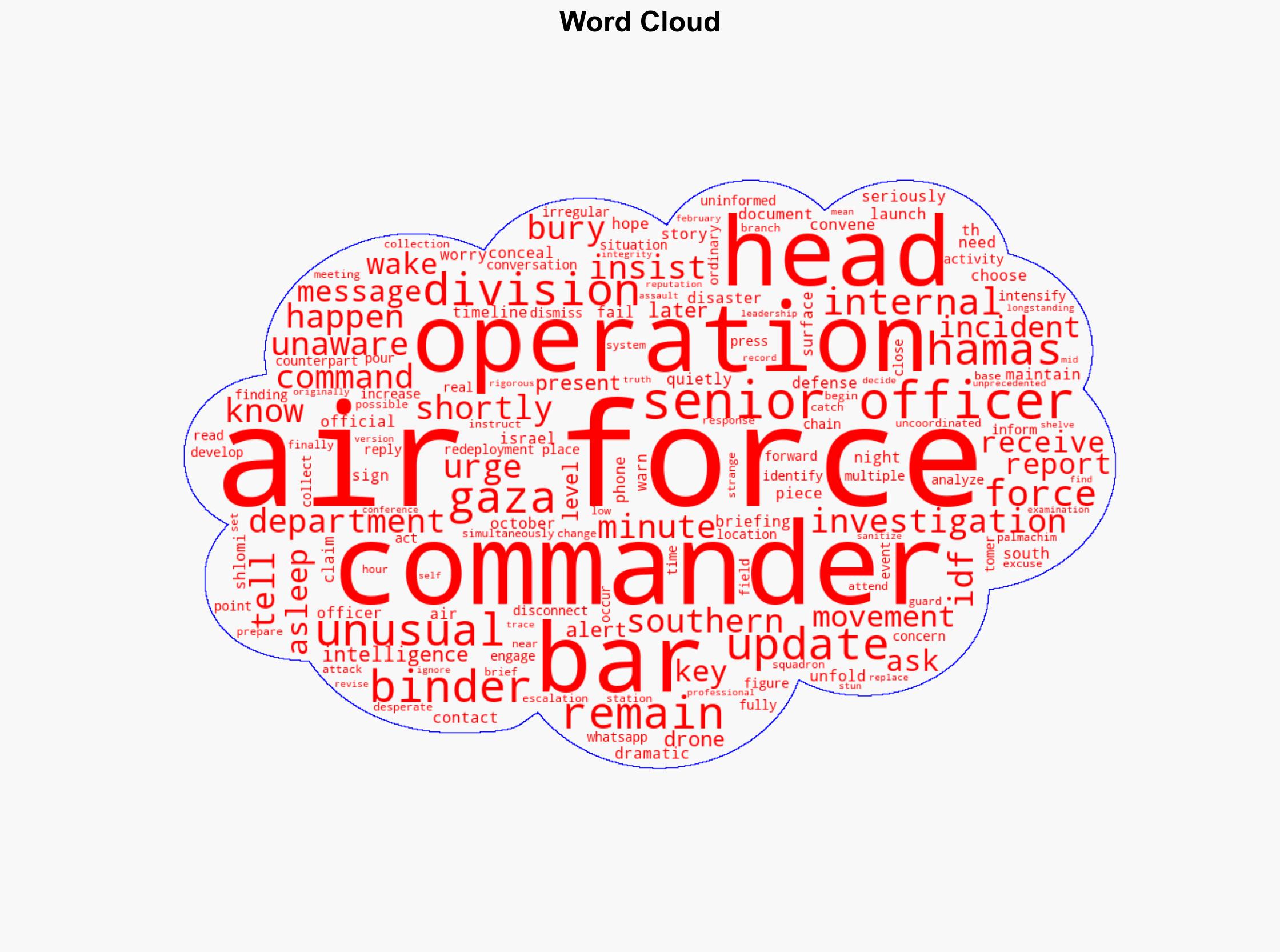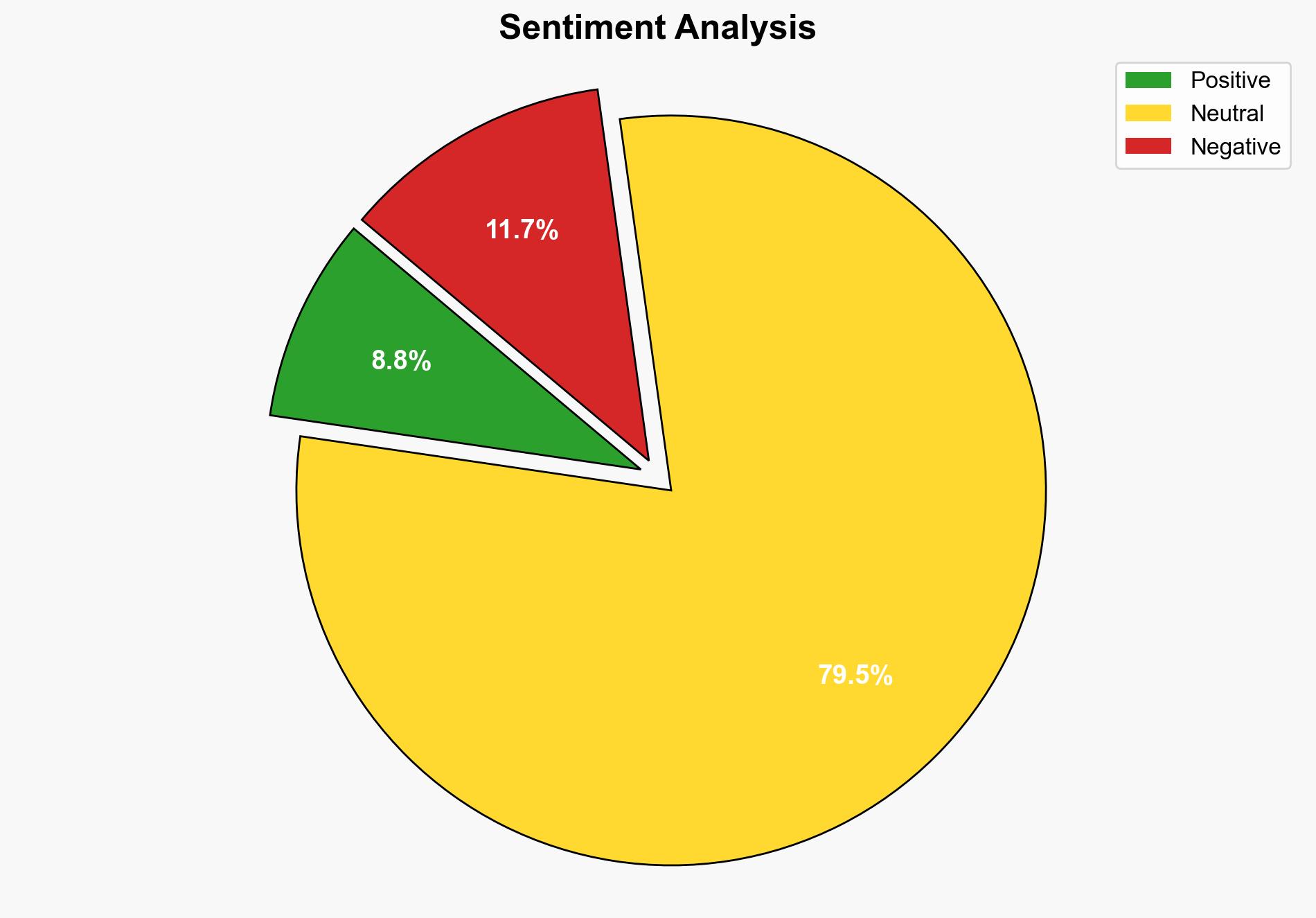The document the Air Force didnt want you to see – Israelnationalnews.com
Published on: 2025-11-03
Intelligence Report: The document the Air Force didn’t want you to see – Israelnationalnews.com
1. BLUF (Bottom Line Up Front)
The most supported hypothesis is that the Israeli Air Force’s internal communication and alert systems failed to adequately respond to early warnings of unusual activity, leading to a delayed and uncoordinated response to the Hamas attack. Confidence Level: Moderate. Recommended action includes a comprehensive review of communication protocols and alert systems to prevent future lapses.
2. Competing Hypotheses
Hypothesis 1: The Israeli Air Force experienced a systemic failure in communication and alert protocols, resulting in a delayed response to the Hamas attack. This hypothesis is supported by the timeline of events and the reported lack of awareness among senior officers.
Hypothesis 2: There was a deliberate attempt to downplay or ignore intelligence warnings due to internal biases or political pressures, leading to an inadequate response. This is suggested by the decision to shelve the original report and replace it with a sanitized version.
3. Key Assumptions and Red Flags
– Assumption 1: The Air Force’s internal communication systems are generally reliable but failed in this instance.
– Assumption 2: Senior officers were genuinely unaware of the situation due to procedural lapses rather than intentional neglect.
– Red Flag: The decision to replace the original report with a sanitized version raises concerns about transparency and accountability.
– Missing Data: Details on why the original report was shelved and who authorized the sanitized version are not provided.
4. Implications and Strategic Risks
– A failure in military communication systems can lead to significant security vulnerabilities, potentially emboldening adversaries.
– The incident may undermine trust within the military and with allied forces, affecting future cooperation and intelligence sharing.
– If internal biases or political pressures influenced the response, this could lead to further strategic missteps in crisis situations.
5. Recommendations and Outlook
- Conduct a thorough review of communication and alert protocols, focusing on redundancy and fail-safes.
- Implement regular training and simulations to ensure readiness and responsiveness to intelligence warnings.
- Best Case: Improved protocols lead to enhanced security and operational efficiency.
- Worst Case: Continued systemic failures result in further security breaches and loss of life.
- Most Likely: Incremental improvements in communication systems and protocols, with ongoing challenges in transparency and accountability.
6. Key Individuals and Entities
– Shlomi Binder
– Tomer Bar
7. Thematic Tags
national security threats, cybersecurity, counter-terrorism, regional focus




